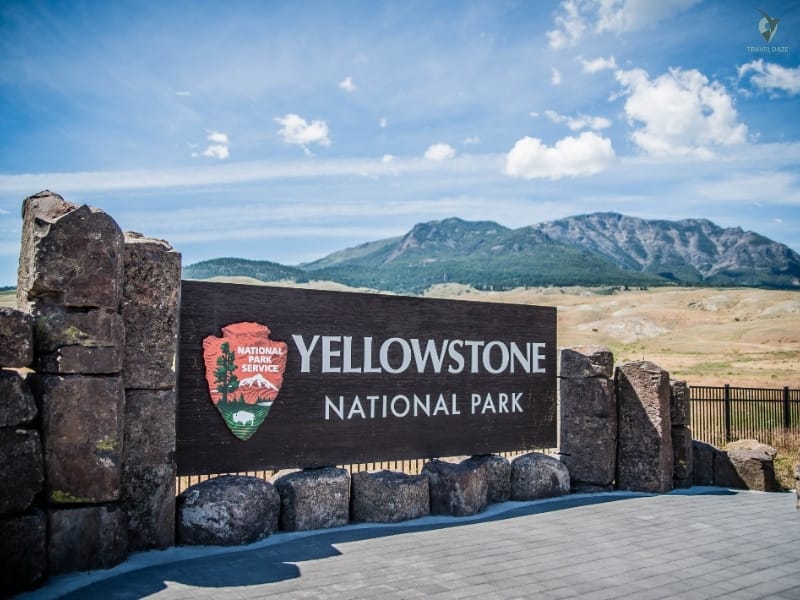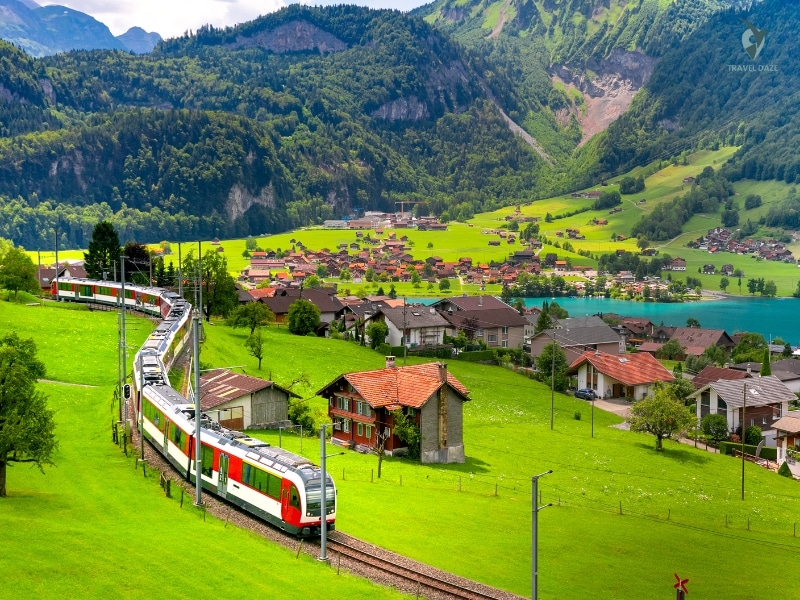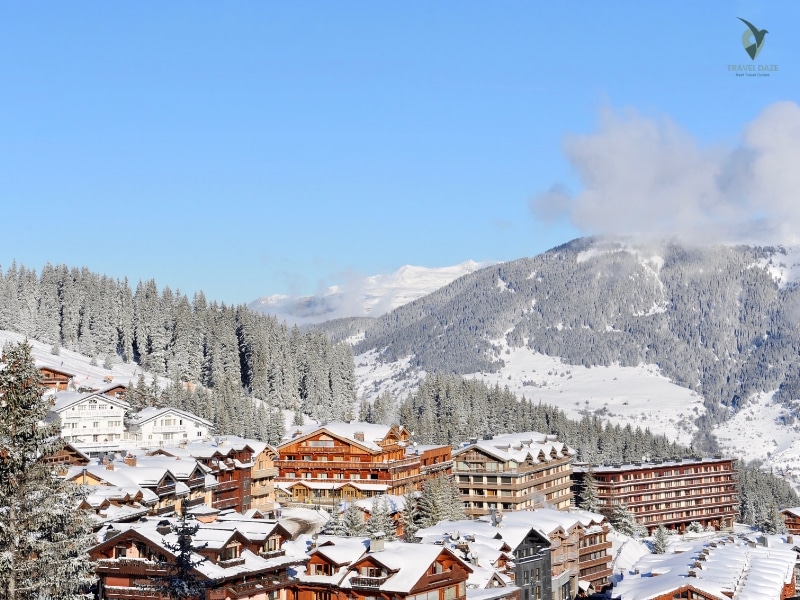Yellowstone National Park is full of natural beauty, showcasing some of the most stunning scenery in the United States. This national park offers everything from steaming geysers to clear lakes, making it a perfect place for hikers. No matter if you want a relaxing walk or a tough hike, there’s a path for every explorer.
Table of Contents
ToggleI have walked many of these trails, and each one has its own special features. The Mammoth Hot Springs area combines geothermal features with beautiful views. Hiking here is like entering a different world. This is a great way to enjoy the park’s beauty and find its hidden treasures.
Main Points
- Yellowstone National Park has trails for everyone, ranging from easy strolls to tough hikes.
- The Mammoth Hot Springs area is a place you have to visit because of its special geothermal features.
- Hiking is a great way to see the park’s wildlife, geysers, and beautiful views.
- Driving is important for reaching many of the park’s trailheads and beautiful locations.
- Hiking in the early morning helps you miss the crowds and enjoy cooler weather.
Summary of Hiking Trails in Yellowstone
Yellowstone’s trails offer everything from beautiful waterfalls to rough canyons, making it a perfect place for nature lovers. The park has different types of land that provide options for everyone, whether you want a short walk or a day full of fun. Every trail shares a story, highlighting the park’s special geological features and stunning views.
Fairy Falls is one of my favorite places. This 4.8-mile trail takes you to a beautiful 200-foot waterfall, which is surrounded by vibrant greenery. It’s a wonderful mix of beauty and adventure, making it a must-visit for everyone. The trail is quite easy, with little elevation change, making it suitable for most hikers.
The Grand Canyon of Yellowstone is another famous place to visit. The North Rim Trail provides wide views of the canyon’s bright colors and the rushing Yellowstone River below. The hike is moderate, but the views make every step worthwhile. The canyon’s special rock formations show the park’s volcanic past.
The trails in Yellowstone National Park are not just paths; they are openings to new experiences. Every hike offers a chance to experience geothermal features and meet wildlife, allowing you to connect with nature. The park works hard to keep these trails clean and beautiful for future generations.
Whether you’re visiting waterfalls, exploring canyons, or seeing geysers, Yellowstone’s trails offer amazing experiences. Put on your boots and prepare to discover this beautiful natural area.
Finding Your Way to Yellowstone National Park Entrances
Yellowstone National Park has five different entrances, each providing a special way to explore its beautiful nature. Whether you love wildlife, hot springs, or beautiful views, picking the right entrance can make a big difference in your experience. Here is a summary of what each entrance provides.
North and East Entrances
The North Entrance, found close to Gardiner, Montana, is the only entrance that stays open all year. It’s near Mammoth Hot Springs, where you can see terraced hot springs and watch elk grazing close by. This entrance is perfect for wildlife lovers because it offers easy access to Lamar Valley, often called the “Serengeti of North America.”
The East Entrance, close to Cody, Wyoming, is a beautiful road that goes through the Absaroka Mountains. It’s ideal for anyone looking for wide views and a more peaceful experience. This entrance takes you to Yellowstone Lake, which is the biggest high-elevation lake in North America. It’s a wonderful place to begin your exploration of the park’s eastern areas.
Entrances to the South and West
The South Entrance links Yellowstone with Grand Teton National Park, making it an easy option for visitors who want to explore both parks. This entrance is perfect for anyone going to the West Thumb Geyser Basin or the famous Old Faithful. The drive is longer, but it offers beautiful views of the lake and amazing geothermal features.
The West Entrance, located close to West Yellowstone, Montana, is the most popular and busiest entrance. It is near the Grand Prismatic Spring and other geothermal spots such as the Lower Geyser Basin. This entrance gives you fast access to some of the park’s most popular attractions if you’re short on time.
Every entrance has its unique appeal and benefits. Think about what matters most to you—like wildlife, geothermal features, or beautiful drives—when you plan your route. There are parking fees at all entrances, so make sure to have cash or a credit card ready. Your Yellowstone adventure starts off perfectly with the right entrance.
Planning Your Visit: When to Go and What to Expect
Choosing the right time to visit Yellowstone can greatly affect your experience. Every season has its own beauty, from flowers blooming to trails blanketed in snow. Knowing how the park changes with the seasons can help you plan a trip that matches your interests and makes sure you have a safe and fun experience.
Highlights of Spring and Summer
Spring in Yellowstone brings a sense of new beginnings. Wildflowers cover the meadows, and animals are more lively. I have seen bison calves and elk wandering through the valleys at this time of year. Trails in the Yellowstone Canyon area are beginning to open, although some may still have patches of snow. Get ready for changing weather, as rain and snow can happen even in late spring.
Summer is the best time to visit. The weather is steady, which is perfect for long hikes. The trails around the Grand Canyon of Yellowstone are easy to access and provide beautiful views of the colorful canyon walls. The busiest crowds are in July and August, so it’s best to start early to miss the rush. This is a great time to explore trails at higher elevations.
Insights for Fall and Winter
Autumn is my favorite season to visit Yellowstone. The crowds lessen, and the park changes into a calm, vibrant paradise. The Yellowstone canyon area is truly stunning, with golden aspens surrounding the canyon. Animals are busy getting ready for winter, but it’s important to stay at a safe distance, especially during the elk rut.
Winter transforms Yellowstone into a peaceful, snowy wonderland. Even though some trails are closed, snowshoeing and cross-country skiing offer new options. The grand canyon of Yellowstone looks enchanting with trees covered in frost and waterfalls that are frozen. Get ready for chilly weather and fewer services, but the peace and beauty make it all worthwhile.
Whenever you plan your visit, it’s important to prepare in advance. Look into the trail conditions, prepare for different weather, and be mindful of wildlife. Every season provides a special way to enjoy the wonders of Yellowstone, so pick the time that fits your adventure style best.
Important Equipment and Safety Advice
To explore Yellowstone’s trails, you need more than just excitement; you also need to be prepared and aware. The park has different types of land and changing weather that can be tough for even skilled hikers. Having the right equipment and understanding helps make your adventure safe and enjoyable.
Tips for Staying Safe Around Bears
Yellowstone has both grizzly and black bears, so staying safe is very important. Always have bear spray with you and understand how to use it. Be aware, make sounds while hiking, and try not to startle wildlife. Here are some important tips:
- Keep bear spray handy: Make sure it’s easy to reach, not hidden in your backpack.
- Travel in groups: Bears are less likely to come near larger groups.
- Stick to the marked trails: Going off the path raises the chances of unexpected encounters.
- Store food correctly: Use bear-proof containers or hang food away from your campsite.
Items to Bring for the Trails
Smart packing is important for a successful hike. The park is at a high elevation, and the weather changes often, so it’s important to wear layers and have strong gear. Here is a list of essential items:
- Select hiking boots that are waterproof and provide ankle support for rough ground.
- Bring a light rain jacket, warm layers, and fabrics that wick away moisture.
- Bring enough water and energy snacks for long days on the trail.
- Navigation tools: Carry a map, compass, or GPS device since cell service is not reliable.
- First aid kit: Make sure to have essentials such as bandages, blister treatment, and medications.
Keep in mind that getting ready is essential for fully enjoying the wonders of Yellowstone. When you hike by the Yellowstone River or discover quiet trails, having the right equipment and safety tips helps make your adventure enjoyable and secure.
Hikes for Families in Yellowstone
Visiting Yellowstone with your family can be a fun and unforgettable adventure. The park has many easy trails that are great for everyone, from little kids to grandparents. The paths are clearly marked, simple to follow, and highlight the park’s beautiful scenery without needing much effort.

Simple and Average Day Hikes
One of my favorite trails for families is the West Thumb Boardwalk Loop. The walk is only 0.75 miles long, but it offers amazing views of Yellowstone Lake and its geothermal features. Children enjoy seeing the bright hot springs, and the even ground makes it easy for strollers.
A wonderful choice is the Artists Paint Pots trail, a 1-mile loop that’s ideal for younger hikers. The trail has bubbling mud pots and colorful thermal pools, providing a special and enjoyable experience. Get ready for some stairs, but the effort is small compared to what you will gain.
Families looking for some adventure will find the Grand Prismatic Overlook through the Fairy Falls Trail to be a great option. This 1.5-mile hike goes out and back, taking you to a stunning view of the Grand Prismatic Spring. The walk is moderate, but the beautiful views make it all worthwhile.
- Drink enough water: Make sure to carry enough water, particularly on sunny days.
- Bring snacks: Maintain your energy with easy-to-carry treats.
- Take your time: Enjoy the journey and allow kids to explore at their own speed.
- Take a camera: Record the moments of your family trip.
These trails are more than just walks—they’re chances to connect with nature and make lasting memories. Whether you’re amazed by geothermal features or taking in beautiful views, Yellowstone’s family-friendly hikes have something for everyone.
Discovering Animals on the Paths
One of the most exciting parts of visiting Yellowstone is the opportunity to see its amazing wildlife. The park is a paradise for animal lovers, featuring majestic elk, towering bison, and elusive bears. Every trail provides a special chance to see these animals in their natural surroundings, making memories that will last forever.
Seeing Elk, Bison, and Bears
I will always remember the first time I saw a herd of bison grazing in Lamar Valley. These large animals move quietly and gracefully, and their presence demands respect. The valley is a great place in the park to see these famous animals, especially in the early morning.
Elk are often seen, especially around Mammoth Hot Springs. I frequently see them eating in fields or relaxing in the shade of trees. Their antlers are impressive, particularly in the fall when males compete for dominance.
Bears may be harder to spot, but they are just as interesting. I once saw a grizzly bear near Storm Point, a beautiful place famous for its wildlife. Seeing it from a safe distance was exciting and made me feel small. Bears are wild animals, so always have bear spray with you and keep a distance of at least 100 yards.
To have the best experience watching wildlife, visit places like Lamar Valley, Storm Point, or the North Entrance Road. These locations are popular for regular sightings and provide beautiful settings for photography. The best times to see animals are early in the morning and late in the afternoon.
Here are some tips to improve your wildlife experiences:
- Take your time: Seeing wildlife usually needs patience and careful watching.
- Stay safe by keeping a distance and avoiding approaching or feeding animals.
- Take binoculars with you: They are important for seeing animals far away.
- Take care of the environment: Stick to the trails and do not disturb wildlife homes.
The wildlife in Yellowstone shows how well the park has been cared for. Seeing a bison herd or spotting a bear highlights how important it is to protect this beautiful natural area.
Explore the top hikes in Yellowstone for an exciting adventure.
Yellowstone’s trails offer adventure everywhere, from thick forests to wide meadows. No matter if you’re climbing steep hills or taking a leisurely stroll, the park’s varied landscape has something for everyone. Every trail offers a chance to explore, mixing difficulty with stunning views.
One of my favorite paths goes through green forests, where the smell of pine is in the air. The path leads to bright meadows filled with wildflowers and animals. It’s a great example of how Yellowstone’s trails connect various ecosystems smoothly.
If you’re looking for a full day of fun, I suggest trying longer trails that challenge your stamina. These trails often give you beautiful views or secret spots like quiet waterfalls. It’s important to manage your energy. Bring enough water and snacks, and remember to take breaks to enjoy the scenery.
The trails in Yellowstone offer more than just physical challenges; they provide a chance to connect with nature. No matter if you’re walking on rough paths or enjoying peaceful fields, every step takes you nearer to the park’s wild center. Put on your boots, take your gear, and prepare to explore trails that offer adventure and discovery.

Exploring Hiking Trails Near Mammoth Hot Springs
Visiting Mammoth Hot Springs is like entering a vibrant, natural museum. This area is well-known for its special limestone formations and beautiful loops that provide amazing views. No matter if you are an experienced hiker or just want a nice stroll, these trails are a great way to enjoy nature.
Beautiful Routes and Nearby Sights
The paths near Mammoth Hot Springs combine history with stunning nature. One of my favorite paths is the Upper Terrace Loop. It goes through terraced hot springs and provides beautiful views of the surrounding area. The loop is quite simple, so anyone can enjoy it, no matter their skill level.
A key feature is the Lower Terrace Loop, where you can enjoy the bright colors of the mineral deposits. This trail offers a wonderful view of Yellowstone Lake far away. The mix of geothermal features and beautiful views makes this a place you have to visit.
Here are a few suggestions to enhance your adventure:
- Take a camera: The limestone formations and wide views are great for taking pictures.
- Begin your day early: The morning light brightens the colors of the hot springs and helps avoid crowds.
- Wear strong shoes: The ground can be rough, particularly around the hot springs.
- Enjoy the journey: These trails are great for a thoughtful and uplifting hike.
These beautiful loops are not just paths—they’re a chance to experience Yellowstone’s special geology and history. Mammoth Hot Springs provides an unforgettable experience, whether you’re taking the perfect photo or just enjoying the scenery.
Demanding Paths for the Skilled Hiker
Yellowstone has trails for experienced hikers that challenge your stamina and provide amazing views as a reward. These routes may be tough, but they offer amazing adventures for those ready to take on the challenge. These trails challenge you with steep climbs and rough ground, all while highlighting the park’s natural beauty.
Avalanche Peak: A Challenging Climb with Beautiful Views
The Avalanche Peak trail is popular with seasoned hikers. This 4.5-mile path rises more than 2,000 feet, providing a challenging exercise experience. The steep climb leads you through thick forests and open fields, ending with wide views of the area around you.
At the top, you’ll enjoy stunning views of the canyon, the Yellowstone River, and faraway mountain ranges. The trail is easiest to navigate in summer when the snow is gone, but be ready for unexpected changes in the weather. You need the right gear and good stamina for this hike.
Seven Mile Hole: A Trip Through Different Landscapes
The Seven Mile Hole trail is another tough choice. This path goes down into the Grand Canyon of Yellowstone, featuring steep drops and rocky trails. The different landscape keeps you alert, as every step brings new surprises.
The path takes you to the Yellowstone River canyon, where you can relax and listen to the sound of flowing water. The climb back is tough, so take your time and make sure to bring enough water. This hike challenges your stamina, but it offers amazing views as a reward.
Tips for Getting Ready for Tough Hikes
Make sure you are ready both physically and mentally before you start these trails. Here are a few important tips:
- Prepare ahead of time: Increase your endurance by going on regular hikes and doing cardio exercises.
- Pack smart: Bring strong boots, layered clothes, and enough water.
- Look at the weather: Be prepared for quick changes, particularly in higher areas.
- Begin your hike early: Allow yourself enough time to finish before it gets dark.
Exploring these trails is not just a test of strength; it’s an opportunity to experience the wild beauty of Yellowstone. No matter if you’re climbing Avalanche Peak or discovering the wonders of Seven Mile Hole, these hikes provide a feeling of achievement and breathtaking scenery.
Famous Natural Landmarks and Geological Marvels
Yellowstone’s famous landmarks showcase the beauty of nature, attracting visitors from all over the world. The park has unique geology, with erupting geysers, colorful hot springs, and striking canyons. Every site provides an opportunity to see the powerful forces of nature at work, making them memorable parts of any trip.
Old Faithful and the Grand Prismatic Geyser
Every visit to Yellowstone should include seeing Old Faithful. This well-known geyser erupts every 90 minutes, sending water up to 180 feet into the sky. Its dependability and strength have turned it into a symbol of the park’s geothermal activity. I have watched in amazement as steam rose into the sky, showing nature’s powerful energy.
The Grand Prismatic Geyser nearby shows a beautiful mix of colors. The bright blues, greens, and oranges come from heat-loving bacteria that live in the mineral-rich waters. Walking along the boardwalk by this geyser feels like entering a vibrant painting. To see the best views, I suggest going in the middle of the morning when the sun brings out the colors.
The Grand Canyon of the Yellowstone River
The Grand Canyon of the Yellowstone River is a stunning example of erosion and geology. The 20-mile-long canyon features bright yellow and orange rocks, shaped by the powerful river beneath. I have hiked the rim trail many times, and every visit shows me new details in the canyon’s layered walls.
The rim trail has many viewpoints, like Artist Point, where you can see a beautiful view of the Lower Falls. The falls drop 308 feet into the canyon, making a beautiful misty scene. I’ve discovered that early mornings are the ideal time to visit because the light brings out the canyon’s colors and there are fewer people around.

Here are a few suggestions for visiting these landmarks:
- Get there early: Avoid the crowds and savor peaceful times at popular places.
- Take a guide with you: A park guide can share information about the geology and history of each location.
- Stay on the paths: Help protect the delicate ecosystems near these natural wonders.
- Bring the essentials: water, sunscreen, and a camera are important for a day of exploring.
Yellowstone’s landmarks are not just things to see—they are experiences that link you to the amazing power of the Earth. Watching Old Faithful erupt or looking at the canyon’s depths makes you appreciate the beauty of nature even more.
Beautiful Views: Tall Mountains and Flowing Waterfalls
At the top of a mountain in Yellowstone, the world seems both big and close at once. The paths in this park take you to stunning views, where flowing waterfalls and high mountains come together to show off nature’s beauty. Every step provides a fresh view, mixing calmness with wonder.
Observation Peak and More
Observation Peak is one of my favorite places for stunning views. This trail goes up through thick forests of lodgepole pine and eventually leads to a summit that offers wide views of the nearby mountains. The trip is just as unforgettable as the place you’re going, with each turn showing a new part of Yellowstone’s beauty.
The winding road to the trailhead is an exciting journey, showing you wildlife and peaceful scenery along the way. At the top, the horizon goes on forever, filled with lodgepole pines and surrounded by faraway mountains. It’s a place where time feels like it has stopped, letting you completely enjoy the moment.
These trails also feature beautiful waterfalls. I frequently stop to hear the gentle sounds of flowing water, a calming background to the whisper of lodgepole pines. The quiet moments of reflection are what make hiking in Yellowstone truly special.
Here are a few suggestions to enjoy these beautiful hikes to the fullest:
- Begin your day early: The morning light brightens the colors of the scenery and helps avoid crowds.
- Bring a camera because the wide views and waterfalls are great for taking pictures.
- Wear strong shoes: The ground can be rough, especially close to waterfalls.
- Enjoy the journey: These trails are for taking in, not hurrying through.
Whether you’re on top of a mountain or enjoying a waterfall, these beautiful views create unforgettable memories. The mix of rough mountains, twisting paths, and peaceful scenery offers an experience that lingers with you even after the hike ends.
Long Day Hikes and Backpacking Options
Going on a long day hike or backpacking trip in Yellowstone offers a chance for adventure and exploration. The park has a wide variety of trails, from tough climbs to peaceful paths lined with pine trees, making it ideal for anyone looking to explore for more than just one day.
Tips for Multi-Day Trails and Camping
Getting ready for a multi-day hike takes some thought, but the benefits make it all worthwhile. Summer is the perfect season for these adventures, thanks to the reliable weather and easy-to-reach trails. I’ve discovered that mixing loop trails results in longer hikes with different views, making the experience enjoyable.
Yellowstone’s backcountry camping sites are well-kept, but you need to make reservations. I suggest booking in advance, particularly during the busy summer months. Packing wisely is important—take lightweight gear, a dependable tent, and enough food for your entire trip.
Here are some important tips for long hikes:
- Plan your route by using maps to find loop trails and campsites on your journey.
- Bring layers: it can get chilly at night, even in summer.
- Drink plenty of water: Bring a water filter to refill from streams.
- Take care of wildlife: Keep food stored correctly and maintain a safe distance from animals.
One of my favorite multi-day trails is the Thorofare and South Boundary Trail. This 70-mile hike leads you through thick pine forests and wide meadows, providing a genuine experience of the wilderness. The trail goes up quite a bit, which can be tough, but the wide views are amazing and stay with you.
It’s important to balance adventure with preparation. I’ve figured out how to pack lightly while still including important items like a first aid kit and bear spray. These tools have helped me overcome unexpected challenges while hiking.
No matter if you’re exploring a loop trail or heading into the backcountry, the longer hikes in Yellowstone offer amazing experiences. The mix of rough land, peaceful pine trees, and beautiful views makes each step enjoyable.
Hiking with a guide or exploring on your own
Choosing whether to hike with a guide or on your own can influence your Yellowstone experience in different ways. Each option has its advantages, and your decision usually relies on how you like to explore and what makes you feel comfortable. Let’s look at the advantages and factors of each.
Advantages of Guided Hikes
Getting a guide can enhance your trip in ways you may not anticipate. Guides provide helpful information about the park’s history, geology, and wildlife. While hiking near a canyon, my guide showed me hidden rock formations and told stories about the area’s volcanic history. This made the experience richer.
Guides improve safety, particularly in places with uneven ground or wild animals. They can guide you through difficult paths and help you steer clear of common mistakes. Additionally, they usually provide advice on how to steer clear of crowds, which can make your hike more enjoyable.
Exploring Alone: The Joy of Freedom
Solo hiking provides a unique sense of freedom. I have liked being able to pick my own speed and path on a whim. Spending time by a waterfall or going off the beaten path, solo adventures allow you to enjoy nature in your own way.
Going out on your own can also create a feeling of achievement. I will always remember the first time I successfully navigated a difficult trail on my own. Being self-reliant brings a great sense of satisfaction.
Important Points to Think About
When choosing between hiking with a guide or going solo, think about these points:
- Guided tours can be expensive, but they usually come with benefits such as transportation and meals.
- If you don’t know the area well, a guide can share helpful information.
- Personal Comfort: Some individuals prefer having a guide for safety, while others enjoy being independent.
In the end, it all depends on what matters most to you. Whether you’re admiring a canyon or pursuing a waterfall, both guided and solo hikes provide memorable experiences. Select the approach that matches your adventure style and helps you feel closest to the wonders of Yellowstone.
Discover local insights and hidden treasures along the trails.
Exploring the less-traveled paths of Yellowstone has a special charm. Although famous places like Old Faithful attract many visitors, some of the park’s most beautiful sights are hidden away from the usual routes. I want to tell you about some of my favorite hidden gems that a lot of visitors overlook.
A favorite spot of mine is the beaver ponds close to Mammoth Hot Springs. These calm places are ideal for a quiet moment away from the busy life. You may see an elk eating close by or hear the soft sound of a beaver working. It reminds us how nature flourishes in peaceful places.
Another gem is the quiet viewpoints near the lake areas. Yellowstone Lake is a well-known spot, but the smaller, unnamed lakes nearby provide peace and stunning reflections. I’ve spent hours here, enjoying the calm and watching the water move gently in the sunlight.
The special thing about these trails is the little details—the wildflowers in the meadows, the sound of leaves moving in the wind, and the rare sight of wildlife. I’ve discovered that taking my time and noticing these moments makes the hike even more enjoyable.
Here are some tips for discovering these hidden treasures:
- Begin in the morning: The light makes everything look beautiful, and you can steer clear of the crowds.
- Check out side trails: Many of the most enchanting places are just a quick turn off the main path.
- Travel light: Take along important items such as water, snacks, and a camera to remember the experiences.
- Keep being curious: often, the greatest discoveries happen by chance.
Yellowstone has secret spots ready for those who are willing to explore beyond the main trails. Quiet beaver ponds, secluded lakes, and unexpected meetings with elk all create lasting memories. Put on your boots, get ready for adventure, and let the trails amaze you.
Advice for Using Navigation and Map Applications Effectively
Getting around easily is important for enjoying your time in Yellowstone’s vast wilderness. Having a good plan helps you stay on track and enjoy the many trails and beautiful spots without delays. Using modern technology along with good planning can make your adventure easier and more fun.
How to Use Offline Maps
Cell service in national parks such as Yellowstone can be unreliable, so downloading offline maps is very helpful. Apps such as the National Park Service app or Gaia GPS let you view detailed trail maps even when you don’t have an internet connection. I always download these before I go out—it has helped me avoid getting lost more than once.
Another suggestion is to highlight important locations such as trailheads, parking spots, and restrooms. This makes it easier for you to find your way, particularly on a hectic day hike. Offline maps display changes in elevation, allowing you to plan your energy levels effectively.
Finding Different Paths
The roads and trails in Yellowstone may close occasionally because of weather conditions or wildlife activity. Planning alternate routes helps you stay prepared and avoid surprises. It’s a good idea to visit the park’s website or app for the latest updates on closures before you begin your trip.
If you want to see bison in Lamar Valley but the road is closed, you can go to Hayden Valley instead. Being flexible is important, and having a backup plan helps keep your journey on course.
Here are some useful tips to improve your navigation experience:
- Choose trusted apps: The National Park Service app is a dependable source for maps and updates.
- Before you go out, make sure to check for any road or trail closures.
- Stay aware: Being ready helps you see wildlife like bison safely.
- Change your plan: Modify your route as the conditions shift during the day.
Navigating Yellowstone’s trails is easy with the right tools and some planning. No matter if you’re going for a short hike or venturing further into the park, these tips will help you be prepared for anything. Download the maps, plan your routes, and prepare to explore one of America’s most famous national parks with ease.
Concluding Thoughts on a Yellowstone Hiking Trip
Thinking back on my time in Yellowstone, I am amazed by the wide range of experiences it provides. Standing on a high peak with wide views or walking along peaceful tree-lined paths, each step brings a fresh experience.
The trails in Yellowstone combine stunning scenery, exciting challenges, and opportunities for exploration like no other place. No matter if you’re admiring geothermal features or seeing animals far away, every hike creates a memorable experience.
I invite you to enjoy the beauty of nature while being safe and ready. Pack smart, care for nature, and let the park’s wonder lead you.
Begin planning your own adventure today. The wonders of Yellowstone are ready to inspire you, just like they have inspired me.
FAQ
When is the best time to visit Yellowstone for hiking?
Visiting Yellowstone from late spring to early fall is a great idea. Summer has warm weather and easy trails, while fall features beautiful leaves and smaller crowds. Winter is wonderful for snowshoeing, but a lot of trails are not open.
What are the best entrances for getting to hiking trails?
The North and East Entrances are perfect for getting to Mammoth Hot Springs and Lamar Valley. The South and West Entrances are near Old Faithful and the Grand Prismatic Geyser, making them ideal for visiting these famous landmarks.
What equipment should I bring for a day hike in Yellowstone?
I always pack strong hiking boots, clothes for different weather, a water bottle, bear spray, and a map. Remember to bring sunscreen and snacks to stay energized!
Are there hikes in Yellowstone that are suitable for families?
Of course! I enjoy the simple walks around Fairy Falls and the Beaver Ponds Trail. These paths are brief, beautiful, and great for children or those just starting out.
What are some ways to stay safe around wildlife when hiking?
I always maintain a safe distance from animals such as elk, bison, and bears. Bring bear spray, make sounds while on the trail, and always keep your distance from wildlife; do not feed them. It’s their home; we’re just guests!
What are some tough hikes for skilled adventurers?
If you’re looking for a challenge, I recommend Avalanche Peak or Seven Mile Hole. These trails provide challenging climbs, stunning views, and a real feeling of achievement.
Is it possible to hike to the Grand Canyon of the Yellowstone River?
Absolutely! I hiked the Rim Trail and enjoyed the beautiful views of the canyon and waterfalls. It’s something everyone should see when they visit the park.
Are there hiking tours with guides in Yellowstone?
Absolutely! I have participated in guided tours to gain expert insights and ensure safety. They are perfect for beginners or anyone wanting to discover unique places.
What is the best way to explore the trails in Yellowstone?
I use offline maps and apps such as AllTrails. Always have backup routes ready in case the trails are closed or the weather changes.
Are there options for multi-day backpacking in Yellowstone?
Absolutely! I have completed multi-day hikes such as the Thorofare Trail. Be sure to obtain a backcountry permit and pack all the necessary items for camping in the wild.





